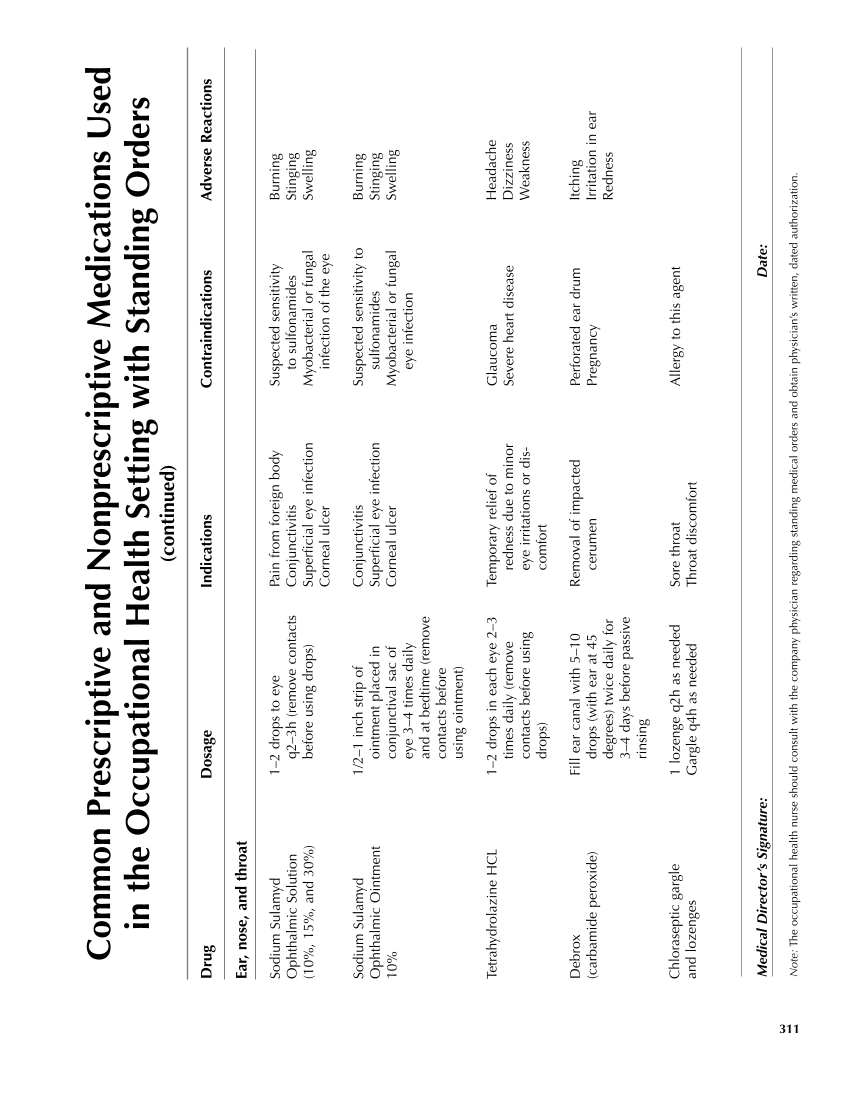311 Ear, nose, and throat Sodium Sulamyd Ophthalmic Solution (10%, 15%, and 30%) Sodium Sulamyd Ophthalmic Ointment 10% Tetrahydrolazine HCL Debrox (carbamide peroxide) Chloraseptic gargle and lozenges 1–2 drops to eye q2–3h (remove contacts before using drops) 1/2–1 inch strip of ointment placed in conjunctival sac of eye 3–4 times daily and at bedtime (remove contacts before using ointment) 1–2 drops in each eye 2–3 times daily (remove contacts before using drops) Fill ear canal with 5–10 drops (with ear at 45 degrees) twice daily for 3–4 days before passive rinsing 1 lozenge q2h as needed Gargle q4h as needed Pain from foreign body Conjunctivitis Superficial eye infection Corneal ulcer Conjunctivitis Superficial eye infection Corneal ulcer Temporary relief of redness due to minor eye irritations or dis- comfort Removal of impacted cerumen Sore throat Throat discomfort Burning Stinging Swelling Burning Stinging Swelling Headache Dizziness Weakness Itching Irritation in ear Redness Suspected sensitivity to sulfonamides Myobacterial or fungal infection of the eye Suspected sensitivity to sulfonamides Myobacterial or fungal eye infection Glaucoma Severe heart disease Perforated ear drum Pregnancy Allergy to this agent Medical Director’s Signature: Date: Note:The occupational health nurse should consult with the company physician regarding standing medical orders and obtain physician’written, s dated authorization. Common Prescriptive and Nonprescriptive Medications Used in the Occupational Health Setting with Standing Orders (continued) Drug Dosage Indications Contraindications Adverse Reactions
Purchased from OEM Press by (ge corporate access). (C) 2013 OEM Health Information, Inc. All rights reserved.












































































































































































































































































































































































































































